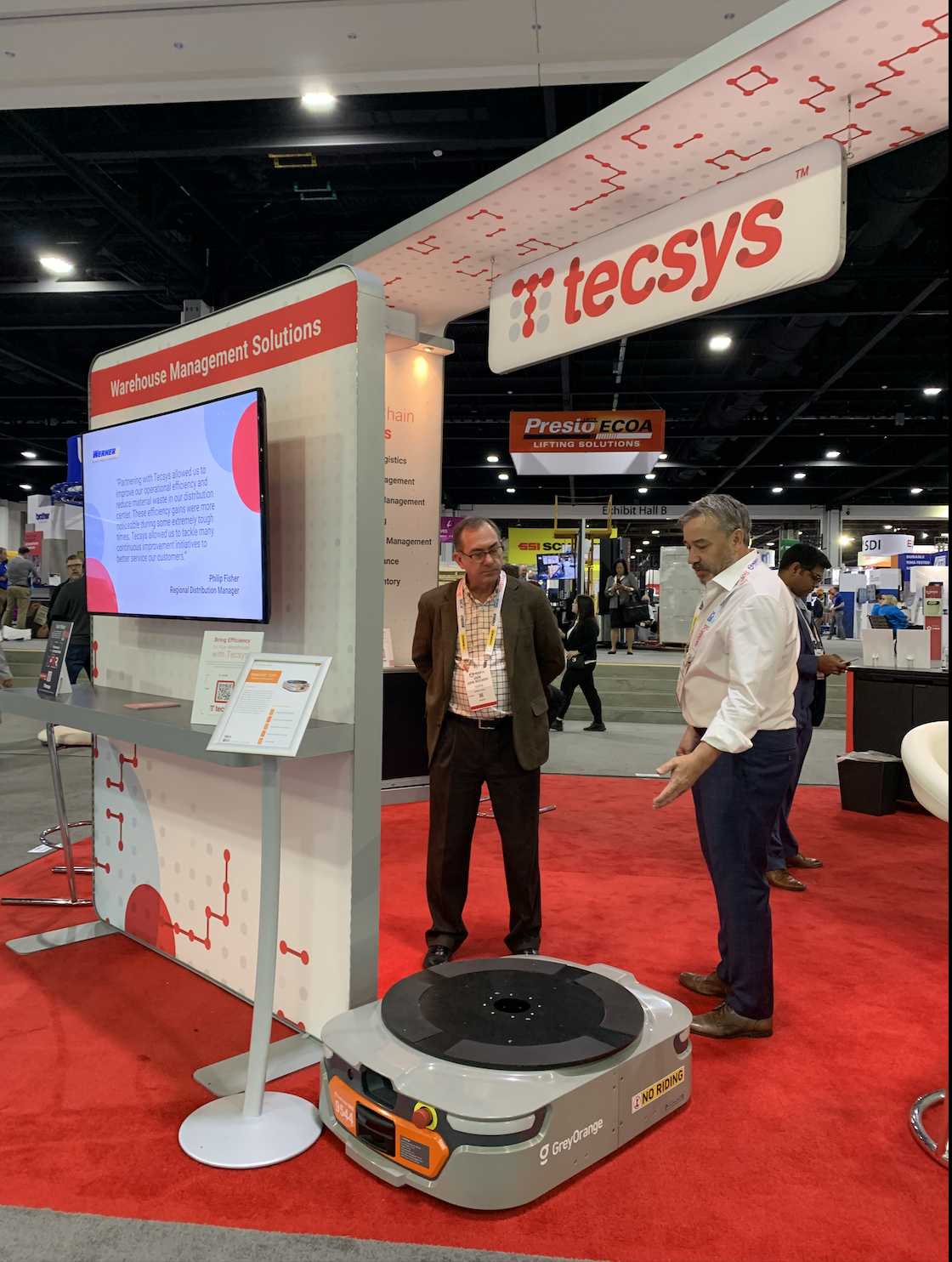
Q&A: Guy Courtin of Tecsys on supply chain and warehouse management
by CM Staff

"All of a sudden the warehouse itself and its role within the supply chain network has taken on very different activities than what it was built for."
Canadian supply chain management and solutions provider Tecsys has introduced a warehouse automation education series which invites businesses and stakeholders to learn more about how different automation tools can help them manage their warehouses.
Supply chain expert Guy Courtin sat down with Canadian Manufacturing for a discussion on how warehousing and supply chain management have changed during the ongoing global pandemic and the tools Tecsys offers to mitigate strains caused by COVID-19 and other external forces. Courtin also serves as vice president and industry principal for retail at Tecsys.

Guy Courtin, VP and industry president for retail and Tecsys.
Q: What led to Tecsys’ decision to focus on automation in warehouse management systems?
A: We are primarily a warehouse management solutions provider, but we have to be able to understand what automation is going to hold for the warehouse. Therefore, how are we as a player in the space going to participate in this trend? It certainly doesn’t mean that we’re going to create our own hardware. We’re not gonna go out and try to sell a specific bot into the solution, but we certainly have to understand or create a strategy with regards to how we integrate with automation. How do we partner with automation vendors? Who do we partner with? Which industries do we focus upon? So that’s where we are in its early days.
Q: We’re seeing many manufacturers onshore their operations from abroad as part of their effort to solve their supply chain issues. Can Tecsys comment on this? Are you seeing more businesses approach you to help them onshore?
A: Nearshoring doesn’t happen overnight. The whole nearshoring concept has been around well before the pandemic. It makes for a good headline and gets a sound bite, but then the reality of trying to nearshore is very different.
There certainly are customers talking to us about it. When you think about nearshoring, you still have to leverage the systems. Whether it’s warehouse management or transportation, order management, things of that nature to help you manage that VR experience.
The reality is moving your manufacturing facilities or moving your manufacturing capacity, from the far East, or from wherever you’re manufacturing back to United States or Canada or Mexico — it doesn’t happen overnight.
There’s a lot of unintended consequences when you start doing this primarily around things such as labour, real estate, rent, trying to find the space, trying to decouple yourself from your existing manufacturing facility in the far East or wherever that may be.
We certainly talk to our customers and help them when we can, but my personal point of view is that what we are showing is that it’s still very much a sort of buzzword, you know, good for the talking track. The reality is we’re still very far away from the ability to nearshore as quickly as we want. I think there’s something like two thirds of manufacturing still done in China. If we need to reshore, we’re going to lower that to what? I can’t do the math but not to one third. We’re not going to lower it by that much.
Q: Could you describe how you’re helping businesses mitigate their supply chain disruptions?
A: When you look at the tools that we provide and what they’re trying to do to mitigate that supply chain disruption, it’s really both sides of the coin. It’s the digital side, which is around how to better manage orders whether it’s B2B or B2C, how to better understand how to fulfill those orders and understand what inventory is available to promise.

Tecsys Warehouse Management Solutions demo.
Then there’s the physical side which is warehouse management, transportation management. How do I better manage the actual movement and the storage of those goods from point A to point B?
When you think about those tools, what we’re truly trying to address for supply chain disruption is a better understanding of where inventory is available to fulfill and then how to better actually fulfill those orders in a way that’s timely, cost effective etc.
But you know, the tool is only as good as the person who wants to use it. We always have to caution folks that technology is not a panacea. It’s a tool and you know how to use it and apply it properly to get the maximum results out of it.
Q: Your clients range from small businesses, healthcare, retail, pharmaceutical, so what are the top concerns that these clients are bringing to you right now?
A: The biggest one we’re seeing across the board is labour. Labour issues continue to haunt a lot of these businesses. It’s everywhere from the warehouse all the way up to the C suite.
The second big challenge that we’re seeing, which relates to labour, is the changing role with warehousing in the fulfillment network.
15 or 20 years ago, warehouses were very much a pass between. I would manufacture something, I would ship it, I would store it in a warehouse, then I would ship it to its final destination.
Now the warehouse has two things such as picking eaches to deliver to our homes, picking eaches to deliver to the hospital, having to do things such as taking returns, kitting at the last mile. All of a sudden the warehouse itself and its role within the supply chain network has taken on very different activities than what it was built for.
This interview has been edited for length and clarity.